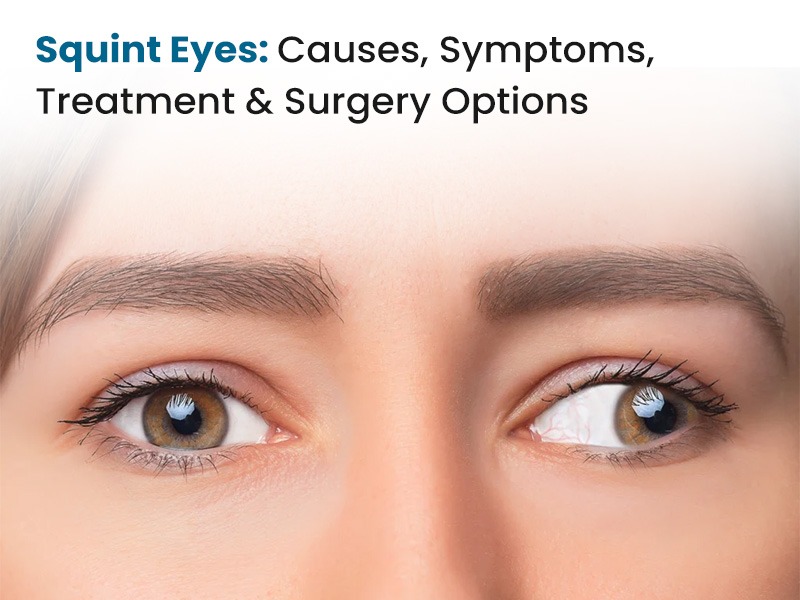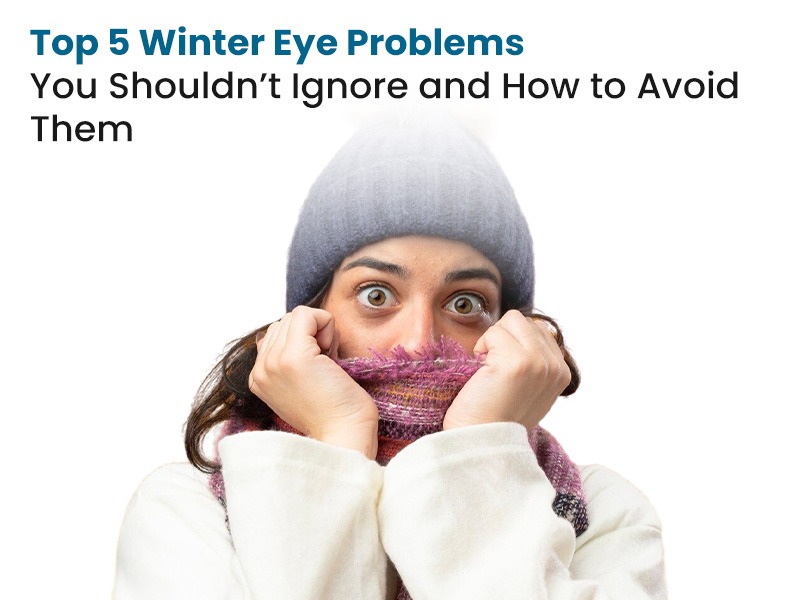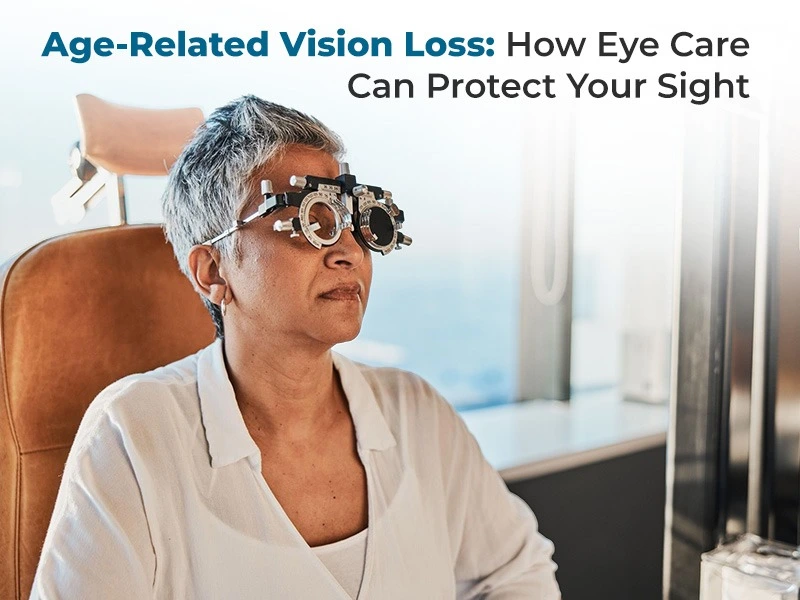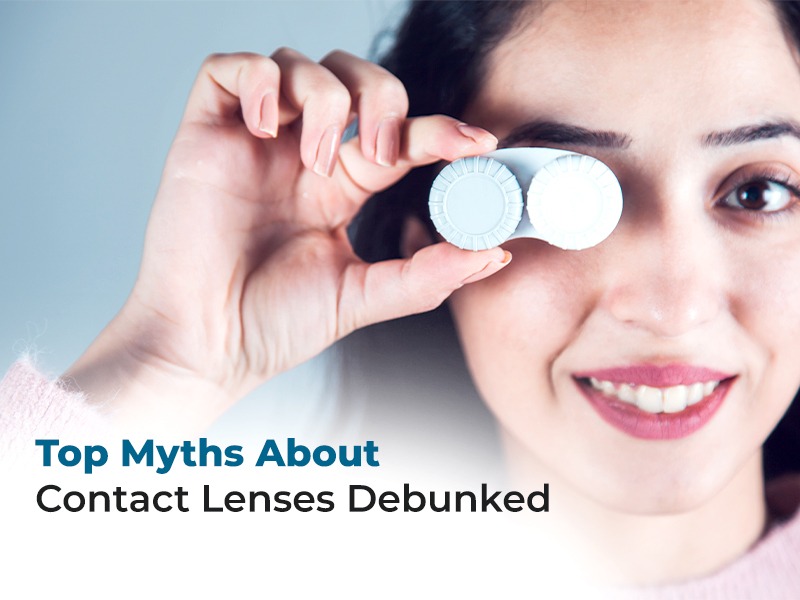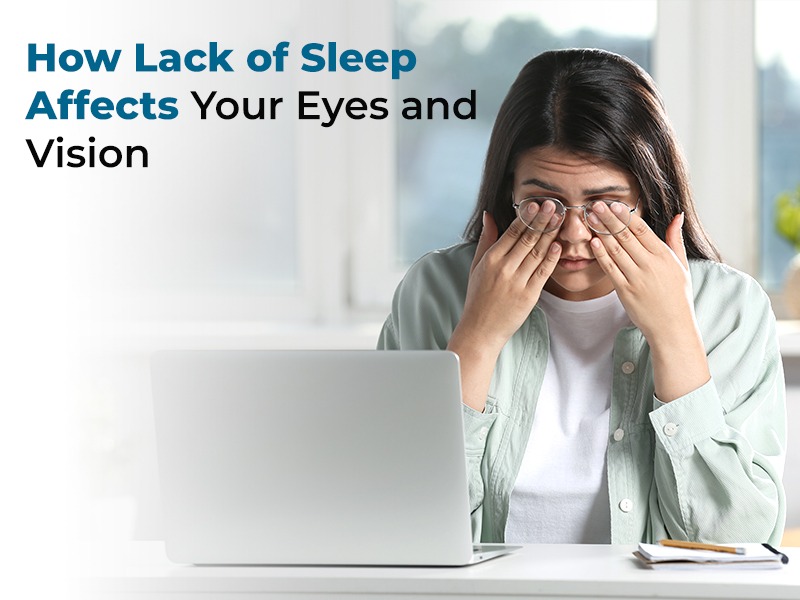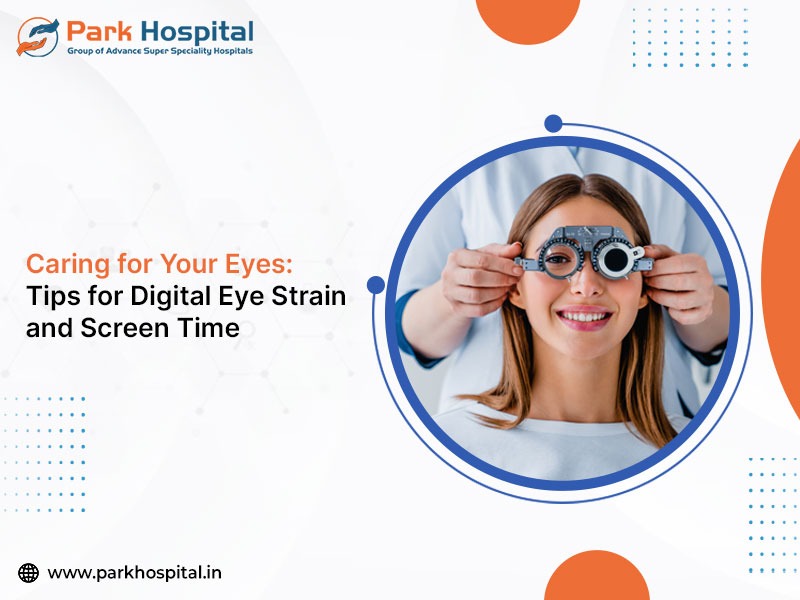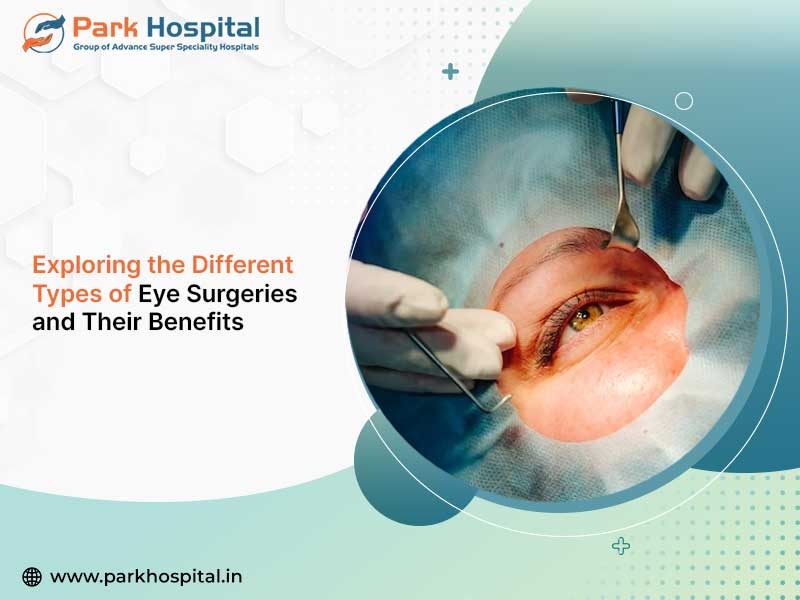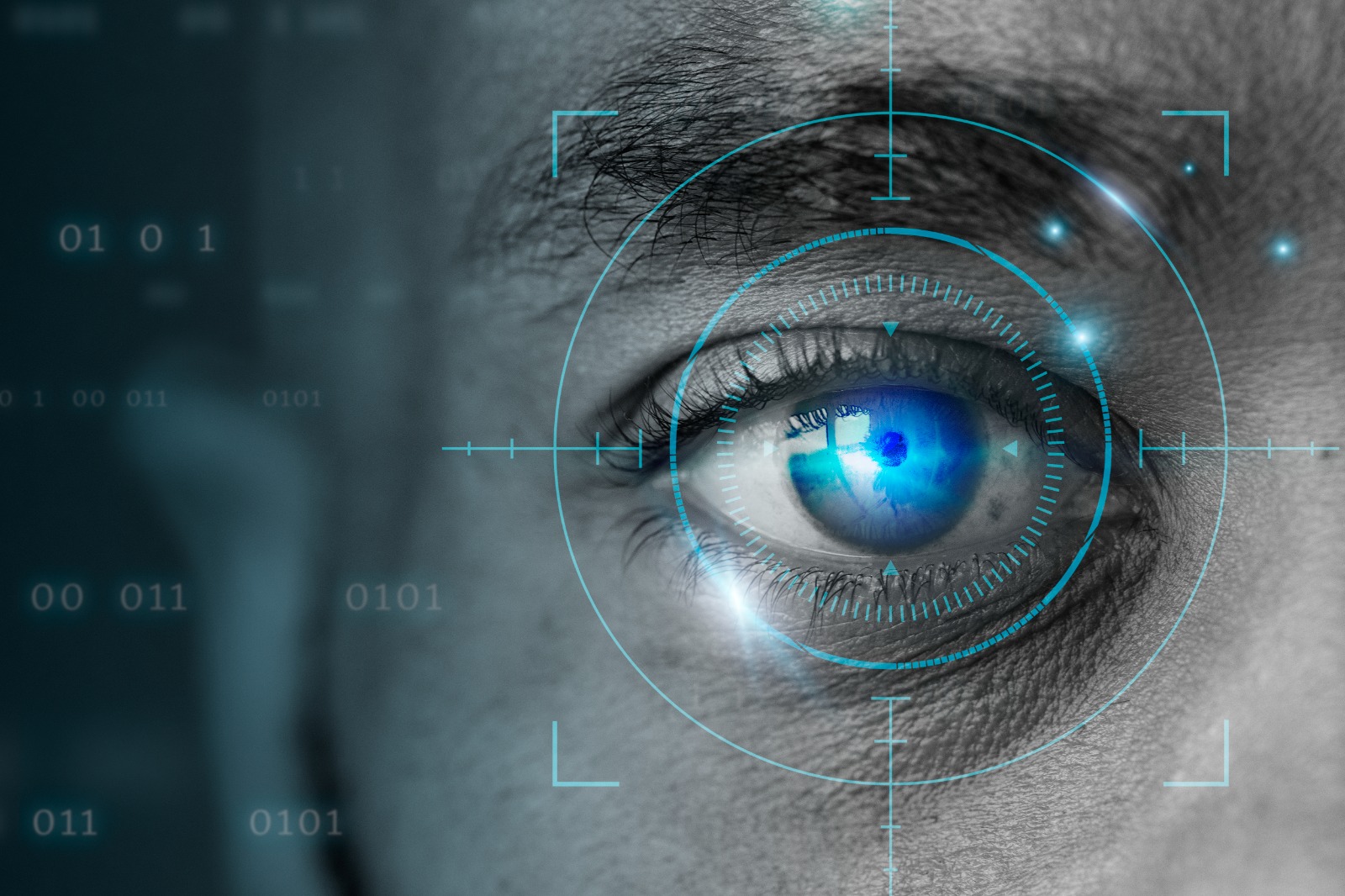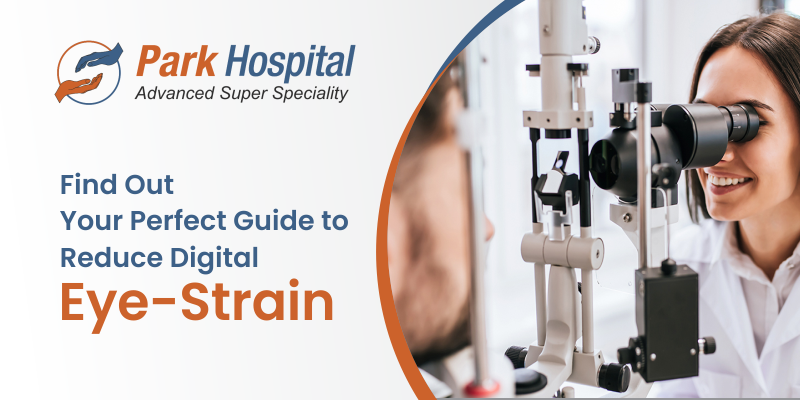Overview
Squint eyes, also known as strabismus, is a condition in which the eyes do not align in the same direction and fail to focus on a single point. This misalignment can occur occasionally or be constant, and it affects both children and adults. People with squint eyes may experience vision problems such as double vision, difficulty in binocular vision, or even loss of eye coordination if left untreated. Detecting squint eyes at an early stage and starting timely squint eyes treatment play a vital role in preventing future complications while helping the eyes regain correct alignment.
At Park Group of Hospitals, we provide advanced diagnostic and treatment facilities for squint eyes through a team of experienced eye specialists. Our advanced facilities are available across multiple locations, Delhi, Gurugram, Faridabad, Sonipat, Panipat, Karnal, Ambala, Patiala, Mohali, Bathinda, Behror, and Jaipur, ensuring accessible and reliable eye care for patients across North India. With a patient-first approach and state-of-the-art squint eye surgery techniques, we aim to deliver the best outcomes for both children and adults with crossed eyes or squint eyes.
For emergency assistance and appointments, you can contact our 24x7 helpline at +91 99166 99166.
What Are Squint Eyes?
Squint eyes, also known as strabismus or crossed eyes, is a condition in which the two eyes fail to move together in the same direction. While one eye focuses on the object in front, the other may shift inward, outward, upward or downward.. This misalignment prevents both eyes from focusing on the same object at the same time, which can interfere with binocular vision and depth perception. In severe cases, untreated squint can also cause double vision or lazy eye.
The condition can affect people of all ages, but it is most commonly noticed in children. Early detection of childhood squint is very important because treatment during the growing years is often more effective. Adults can also develop squint eyes due to neurological problems, injuries, or health conditions that affect the muscles and nerves controlling eye movement.
It is important to differentiate between a true squint and a pseudo squint. A pseudo squint is an optical illusion where a child’s eyes may appear misaligned due to facial features such as a broad nose bridge or skin folds near the eyes. In reality, the eyes are properly aligned, and no medical treatment is required.
On the other hand, a true squint involves actual eye deviation and requires professional evaluation by an eye specialist. In many cases, early treatment options like eye patching, eye exercises for squint, or corrective glasses can improve the condition, while persistent or severe cases may need squint eye surgery for permanent correction.
Causes of Squint Eyes
Squint eyes may occur due to different reasons that influence the nerves and muscles that control the movement of the eyes. In many cases, the condition begins in early childhood, but it can also appear later in life due to medical or neurological issues. Understanding the underlying causes is important for selecting the right squint eyes treatment.
Common Childhood Illnesses Leading to Squint
Children are more vulnerable to developing childhood squint as their visual system is still developing. Illnesses such as measles, high fever, or other infections may weaken eye muscles or affect the nervous system, resulting in eye deviation. Poor vision in one or both eyes during childhood can also trigger misalignment.
Eye Muscle Imbalance and Nerve Issues
An imbalance in the eye muscles responsible for movement is the most frequent cause of squint. When these muscles do not work together, one eye may turn in a different direction. Sometimes, damage to the nerves controlling these muscles can also lead to conjugate eye deviation, which prevents both eyes from moving together in the same direction.
Genetic and Developmental Factors
Children are more likely to develop squint eyes if the condition has previously occurred in their family history. Premature birth, low birth weight, or developmental delays can also play a role in the early onset of crossed eyes. Additionally, children born with structural abnormalities in the eye or brain may be more prone to developing squint.
Other Contributing Causes
In some adults, squint eyes may result from injuries, uncontrolled diabetes, hypertension, or neurological conditions such as stroke. Certain eye problems such as cataracts may disturb clear vision and increase the chances of squint eyes or misalignment. Prolonged untreated vision problems often make the eyes rely more on one side, eventually causing a squint.
Symptoms of Squint Eyes
The symptoms of squint eyes can differ according to how severe the condition is and whether it appears all the time or only occasionally. Some signs are easily visible, while others are noticed only when vision problems occur. Recognizing these symptoms early helps in timely squint eyes treatment and prevents long-term complications.
Eye Deviation and Misalignment
The most common symptom of squint is visible eye deviation, where one eye looks straight while the other turns inward, outward, upward, or downward. This misalignment can occur occasionally in mild cases or remain constant in severe cases. Parents often notice this in children when the eyes do not appear to move together.
Double Vision (Diplopia)
Individuals with squint eyes may experience double vision or diplopia, especially when the misalignment occurs suddenly in adults. This happens because both eyes are focusing on different objects, sending two separate images to the brain When left untreated, the brain often blocks the image from the misaligned eye to prevent confusion, which may gradually lead to weaker vision in that eye.
Difficulty in Binocular Vision
A key symptom of squint eyes is difficulty in maintaining binocular vision. Since both eyes do not work together, depth perception is affected, making tasks such as reading, driving, or sports challenging. Children may struggle with eye-hand coordination and may tilt their heads frequently to focus better.
Signs in Children and Adults
In children, symptoms include frequent eye rubbing, squinting, or closing one eye to see clearly. Parents may also observe that the child avoids looking directly at objects. Adults with squint eyes may complain of eye strain, headaches, blurred vision, or persistent double vision. If these symptoms are not addressed in either age group, they may result in lasting vision issues including amblyopia or a complete loss of depth perception.
Other Associated Symptoms
Apart from the common signs, some patients with squint eyes may show additional symptoms, such as:
Head tilt or face turn to align vision and reduce double images
Children with intermittent squint may often close one eye when exposed to bright light.
Poor depth perception, making tasks like driving or playing sports difficult
Reading difficulties, such as skipping lines or losing place while reading
Eye fatigue or strain, particularly during prolonged near work like studying or using digital devices
Reduced visual field in one eye occurs when the brain ignores or blocks the signals coming from the misaligned eye
Development of lazy eye (amblyopia) in untreated childhood squint
Types of Squint Eyes
There are several types of squint eyes, depending on the direction of misalignment and the cause. Determining the exact type of squint is crucial in choosing the most suitable squint eyes treatment.
Convergent Squint (Esotropia or Crossed Eyes)
One or both eyes may point inward toward the nose in this condition, which is often referred to as crossed eyes.. Childhood squint often presents as esotropia, and without early management, it can lead to lazy eye (amblyopia) or poor depth perception.
Divergent Squint (Exotropia)
In this condition, one or both eyes drift outward, moving away from the nose. A divergent squint is sometimes noticed when a person feels tired, under stress, or looking at faraway objects. With time, it may become persistent and interfere with binocular vision as well as overall eye coordination..
Vertical Squint (Hypertropia or Hypotropia)
A vertical squint occurs when one eye deviates upward (hypertropia) or downward (hypotropia) compared to the other. This type often leads to double vision and difficulty focusing. Vertical squint may be linked to muscle weakness, nerve paralysis, or trauma.
Paralytic and Non-Paralytic Squint
Paralytic squint occurs when the movement of one or more eye muscles is affected because of paralysis. This condition is usually linked to problems such as nerve damage, stroke, or injuries to the head. It usually appears in adults and is often associated with conjugate eye deviation and severe diplopia.
Non-paralytic squint is more common in children and results from imbalance between eye muscles rather than nerve damage. It may remain constant or fluctuate, especially when the child is unwell or fatigued.
Diagnosis of Squint Eyes
Diagnosing squint eyes requires a thorough evaluation by an eye specialist. The process usually begins with a detailed medical history, followed by physical and functional eye examinations. Early diagnosis is very important because untreated squint can lead to complications such as lazy eye (amblyopia) or permanent vision problems.
During the examination, the doctor may conduct the following tests:
Visual Acuity Test: Checks how clearly each eye can see, often using a chart with letters or pictures.
Corneal Light Reflex Test: A light is shone into the eyes to see how it reflects, helping the doctor identify any misalignment.
Cover Test: The doctor covers one eye at a time and observes how the uncovered eye moves to maintain focus.
Retinal Examination: A special lens is used to look at the back of the eye to rule out any structural problems.
Refraction Test: Determines whether vision issues like farsightedness or nearsightedness are contributing to the squint.
Eye Movement Test: Assesses the strength and coordination of the eye muscles in different directions of gaze.
In children, additional tests such as binocular vision assessment and depth perception checks are also performed. Sometimes imaging like MRI or CT scan may be recommended if a neurological cause is suspected.
An early and accurate diagnosis of squint eyes is essential to decide the best treatment, which may include glasses, patching, exercises, or surgery.
Squint Eyes Treatment Options
The treatment for squint eyes varies according to the root cause, the level of severity, and the age of the individual. In most cases, early diagnosis and prompt treatment can prevent vision loss and help restore proper alignment of the eyes. The goal of treatment is not only to improve appearance but also to enhance binocular vision and prevent complications such as amblyopia (lazy eye).
1. Corrective Glasses or Lenses
For many children and adults, squint eyes may develop due to uncorrected vision problems such as farsightedness. In such cases, prescription glasses or contact lenses help reduce the strain on eye muscles and improve alignment.
2. Eye Exercises (Orthoptic Therapy)
Eye muscle exercises, recommended by specialists, are often used in mild squint cases. These exercises strengthen weak muscles and improve coordination between the two eyes. Orthoptic therapy is particularly effective for patients with intermittent squint or convergence insufficiency.
3. Prism Lenses
Prism glasses bend light rays entering the eye and reduce the effort required by eye muscles to maintain alignment. They are often prescribed for adults who develop double vision due to squint.
4. Medications
In some cases, doctors may recommend the use of eye drops or ointments to manage specific types of squint, especially when linked with underlying nerve or muscle weakness.
5. Surgical Treatment
When non-surgical options are not effective, surgery is considered the most reliable treatment for squint eyes. The process works by adjusting certain eye muscles, either making them tighter or more relaxed, in order to bring the eyes back into proper alignment. Squint surgery is safe and can be performed in children as well as adults. In children, it is usually done at an early age to ensure proper vision development.
6. Botox Injections
In selected cases, botulinum toxin (Botox) injections may be used as an alternative to surgery. This treatment temporarily weakens overactive eye muscles, allowing the eyes to realign naturally. It is sometimes recommended for patients who are not immediate candidates for surgery.
7. Amblyopia (Lazy Eye) Therapy
If squint has caused amblyopia, treatment may also include patching the stronger eye to stimulate the weaker eye, combined with vision therapy. It is important for achieving lasting improvement in eyesight.
Squint Eye Surgery
When non-surgical treatments like glasses, vision therapy, or eye exercises are not effective, squint eye surgery is often recommended as a reliable option. The primary purpose of this surgery is to realign the eyes, helping them appear straight and work in coordination. This not only improves appearance but also helps in restoring better binocular vision and depth perception in many cases.
The procedure is usually performed under general anesthesia, especially for children, and local anesthesia may be considered for adults in some cases. In the surgical procedure, the ophthalmologist carefully modifies the small muscles responsible for guiding the movement of the eye. These muscles may be tightened, loosened, or repositioned depending on whether the eye is turning inward, outward, upward, or downward. The surgery usually takes less than an hour, and most patients can return home the same day.
Post-surgery, patients may experience mild redness or discomfort, which usually settles within a few weeks. In some cases, additional therapy or follow-up surgery might be required if the eyes do not remain perfectly aligned. Consistent checkup appointments with the eye specialist are important to track recovery and maintain lasting positive results.
Squint eye surgery is considered safe and effective, with a high success rate in both children and adults. Early surgical intervention in children can prevent complications like lazy eye (amblyopia) and help in achieving proper visual development. For adults, surgery improves eye alignment, reduces double vision, and enhances overall quality of life.
Complications if Untreated
If squint eyes are not identified and managed on time, they may lead to several long-term complications that can affect both vision and quality of life. Detecting the condition at an early stage and beginning treatment promptly is essential to avoid such complications.
One of the most common complications is amblyopia, also known as lazy eye. The brain may begin to overlook the visual input from the eye that is not properly aligned, which hampers the normal development of sight in that eye. If the condition is not addressed in childhood, the loss of vision can turn irreversible.
Another serious outcome is loss of binocular vision. Binocular vision helps both eyes function in coordination so that they form one clear and three dimensional image. Without it, depth perception becomes difficult, which may affect daily tasks like driving, reading, or even simple hand-eye coordination activities.
Untreated squint can also lead to double vision (diplopia), especially in adults. Constant double vision can be very disturbing and may reduce concentration, productivity, and overall comfort.
Children and adults who live with untreated squint often experience difficulties beyond the physical condition. It can also lead to psychological concerns and social challenges, especially when binocular vision is affected. Misaligned eyes can sometimes result in reduced confidence, social anxiety, or teasing among children, which may impact emotional well-being.
In rare cases, persistent misalignment can cause strain-related headaches or eye fatigue because the eyes continuously struggle to focus.
Addressing squint at the right time can prevent these complications and restore both functional and cosmetic eye health.
Prevention and Care for Squint Eyes
Squint eyes cannot always be fully prevented, especially when linked to genetics or developmental issues, but timely care and healthy practices can reduce risks. Early detection is key, as noticing changes in eye alignment or vision helps avoid long-term complications.
Regular eye check-ups with an ophthalmologist are vital for children, particularly in the early growth years. Correcting refractive errors like farsightedness or astigmatism at the right stage can help prevent worsening of eye misalignment.
A nutritious diet containing vitamin A, vitamin C, and omega 3 fatty acids helps in maintaining healthy eyes. Limiting screen time, ensuring good lighting, and avoiding eye strain also protect vision. Children with a family history of squint eyes should be monitored closely, and medical advice should be sought promptly if even slight eye turning appears.
Following prescribed treatment, such as using corrective glasses, practicing eye exercises, and attending follow-ups, ensures better management. With timely care, lifestyle measures, and proper treatment, many complications of squint eyes can be avoided, supporting clear and aligned vision.
Conclusion
Squint eyes, also called strabismus, are not only a cosmetic concern but also a condition that affects vision, eye coordination, and day to day activities. If the problem is ignored for too long it can result in complications such as amblyopia which is also known as lazy eye, double vision, and difficulty in achieving proper depth perception. These complications may further impact learning, motor skills, and self confidence.
The positive side is that squint eyes can be treated at almost any age if the condition is diagnosed in time. Modern treatment options include corrective spectacles, vision therapy exercises, and surgical procedures for advanced cases. Children usually benefit more when the treatment begins early, although adults can also experience significant improvement when guided by an eye specialist. Regular eye checkups and timely medical advice play a very important role in ensuring healthy vision and avoiding long term problems.
In simple terms, squint eyes should never be seen as a permanent limitation. With the right medical care, consistent follow up, and preventive measures, normal alignment of the eyes can be restored. It helps in improving eyesight and maintaining healthy eyes while also boosting self confidence and enhancing the overall quality of life.
Frequently Asked Questions on Squint Eyes
What are Squint Eyes and how can they be treated?
Squint eyes, also called strabismus, occur when both eyes are not aligned in the same direction. This condition can affect vision and appearance. The treatment varies according to the seriousness of the condition and may involve the use of glasses, specific eye exercises, patching therapy, or corrective surgery. With early diagnosis and proper treatment, squint eyes can be corrected at almost any age.
Is it possible to correct squint eyes naturally without surgery?
In some mild cases, squint eyes can be improved with non surgical methods such as corrective glasses or vision therapy. If the condition is serious or does not improve with these methods, doctors may suggest surgery. Consulting an eye specialist is the best way to determine the right approach.
At what age should a person undergo squint eye surgery?
Squint eye surgery can be performed at almost any age, but it is usually advised to correct the problem in early childhood. The earlier the treatment, the better the chances of restoring normal eye alignment and preventing vision loss. Adults can also undergo surgery and experience significant improvement.
Are squint eyes only a cosmetic issue?
No, squint eyes are not only about appearance. They can affect binocular vision, depth perception, and coordination. If left untreated, they can lead to complications like amblyopia or double vision. Correcting squint eyes helps both in vision improvement and in boosting self confidence.
Can squint eyes come back after treatment?
In some cases, squint eyes may reappear even after successful treatment. This can happen if the underlying muscle imbalance or nerve issue persists. Regular eye checkups, follow up care, and in some cases additional treatment can help maintain proper alignment.

